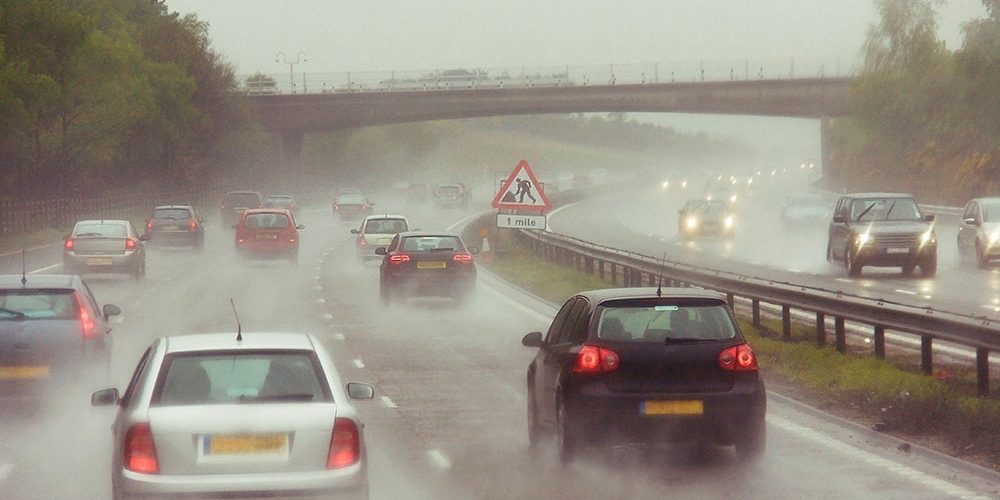Driving a car in rainy weather can be dangerous if you’re not well-prepared. Whether it’s light rain or a heavy storm, you want to make sure your vehicle is up to the task and that you are taking all of the necessary precautions for safe driving. It can be scary heading out onto the roads with so much water flying around, but thankfully there are several steps you can take to ensure both yourself and your car are ready for the rain. In this blog post, we’ll explore important things every car owner should know before driving in wet conditions so that you can feel prepared the next time inclement weather strikes!
Learn when it’s safe to drive in the rain
Driving in the rain can be dangerous, particularly if you’re not prepared. However, with a little bit of advanced planning and knowledge, you can safely traverse the wet conditions. One of the best tips for driving in the rain is to check the weather forecast ahead of time. Doing so will provide an informed outlook on what kind of journey you’ll be embarking on, allowing you to pack any extra items that might make your trip easier or safer. You should also plan around optimal driving times. This way you can adjust your timeline accordingly and avoid potentially hazardous roadways that may increase your chances of an accident. When it comes to tackling wet roads, being well-informed is always better than being unprepared.
Increase your vehicle’s visibility
To make your journey safer, make sure you turn on your headlights and use windshield wipers on the highest setting. This helps you see clearly while also allowing other drivers to identify your car. Not only will this help increase visibility, but it’s also a legal requirement. So if you’re caught without headlights or non-functional windshield wipers, don’t be surprised when you receive a ticket! Don’t forget to keep a safe following distance between yourself and the driver in front of you. For every 10mph of speed you should leave one car length between your vehicle and the one in front. A few simple and easy steps will keep you and everyone out and about on the road safe during rainy weather.
Slow down and increase your stopping distance
Stopping distances should be increased in wet weather. This is because roads are slippery when they are wet, and it takes longer to bring your car safely to a stop. A good rule of thumb is to double the amount of space between yourself and the next car ahead. Keeping this additional stopping distance will help provide you with more reaction time if an emergency arises. However, if the road is too slick and conditions make it nearly impossible to stop, then you may need to further reduce your speed to remain safe in heavy rain. Being aware of weather conditions and understanding how to drive accordingly are key elements of staying safe out there.
Watch out for other drivers
It’s important to keep an eye out for drivers who may not be paying attention or who may be driving too fast. Remember, it may take you twice as long to come to a complete stop on wet roads. Also, your visibility is reduced, so allow for extra time for braking. Reduce your speed and increase your following distance from other vehicles. Turn your headlights and windshield wipers on and, if possible, avoid driving at night in heavy rain. If your tyres wear down over time, consider getting new ones with deeper treads before heading out in wet conditions – they’ll help provide you with better traction and improved handling of the vehicle on slick roads. Following these simple tips will ensure that you drive safely and get where you need to go in the rain with confidence!
Don’t hydroplane
One of the key risks associated with driving in the rain is hydroplaning. This occurs when a car runs over a large accumulation of water on the road, resulting in little or no contact between tyres and pavement. This lack of contact will lead to the car sliding or skidding. If you feel your vehicle start to skid, do not slam on your brakes. Instead, release the accelerator pedal and steer gently in the direction of the skid until you regain control. This may seem counterintuitive at first but if done properly your vehicle will right itself as soon as it regains traction.
Use your windshield wipers
Using your windshield wipers is an essential part of driving safely in the rain. It is important to remember to regularly change and maintain your wiper blades for optimal visibility. Doing so will help to ensure safer driving practices by providing improved visibility and preventing potential road obstacles from being missed. Furthermore, using your wipers correctly in different weather conditions helps to keep your vision clear and safe when on the road. Pay attention to how hard it is raining, reduce your speed, and increase space between other cars as they are also at risk of hydroplaning due to wet roads. You should also adjust the intermittent speed of your wiper blades accordingly. Driving with caution and making sure you use your windshield wipers will help get you where you need to go safely!
Driving in the rain – The key points
When driving in the rain, it is important to be aware of your surroundings and the situation at hand. Stay alert and do everything you can to ensure your safety and the safety of the other drivers around you. Make sure you check the weather forecast before leaving, increase your visibility with headlights, slow down and leave extra space between cars, watch out for people driving too fast for conditions, and avoid hydroplaning by releasing the accelerator if you feel it slip. With these simple tips in mind, you’ll be able to remain safe on the roads even during bad weather conditions. Remember, if you need any extra advice or help with driving in wet conditions, reach out to us at Double Dee Autos!

